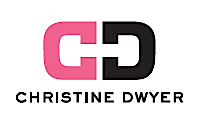- Are you stuck in a training plateau?
- How do you get out of a training rut?
- Do you need to shake up your workout routine?
7 Ways To Rise Above Your Training Plateaus
There is no one way to move beyond a plateau, which occurs because your body adapts to your training, your diet or both. The more you work out and the higher your fitness level reaches, the faster your body adapts. To get past that, you have to surprise your body into working harder.
So change it up! Change your routine, diet, or program—just do something different so that your body has to work harder. Whatever that is will be different for everyone, so keep trying until you find the combination that works.
Here are some ideas:
1. Sleep More and Better
Muscle grows when you sleep. If you shortchange your sleep time, you shortchange growth. Your cortisol levels get out of whack, too, which promotes fat storage, not muscle growth. Set a bedtime that gives you eight hours of sleep and stick to it – everyday (even on weekends!). Before bed, try to eliminate TV, internet, caffeine and alcohol.
2. Catch a Wave
Try 7-5-3 wave loading to shake things up in your routine. What is wave loading? It is when you adjust the load up and/or down within subsequent sets of the same exercises. This allows you to creep up in weight while the reps go down. Your body will be tricked into lifting heavier weight for a shorter period of time.
3. Cut Your Rest Time
Something as small as changing your rest periods can make a huge difference in your progress. Cut your rest time by 15 seconds each week until you start seeing new progress.
4. Time Your Calories
Everything in your program, even your calorie intake, should be timed if you want to see consistent progress. Bump up your calories for four weeks by 250-500 each week—depending on your current intake and your caloric needs. Then bring them back for two weeks.
This is like taking two steps forward, one step back—but in a good way. It’s an excellent way to help make lean muscle gains without the blubber.
5. Get a Grip
Using a thicker bar may not seem like a big deal, but it can bring big, quick change. Increasing the diameter of the handle on dumbbells and barbells uses different muscle fibers, so you’ll often find yourself using muscles you undertrain or even overlook. This includes your forearms and hands.
6. Add 30-second Isometric Holds
Your muscles are weakest at the extreme ends of a movement, when a muscle is fully shortened or lengthened. This is why you see so many people do partial range-of-motion reps in the middle range of a movement. It’s just easier that way.
Make it harder! Try to add 30-second isometric holds at the end of your movements in order to get the most out of your muscles.
7. Consider a Personal Trainer
A trainer will get more out of you just by standing there and encouraging you to do more. But a good personal trainer will do more than that and not allow you to give up when things get uncomfortable. I have been a fitness professional for over 20 years, but I work with a personal trainer to get the benefit of having someone else’s eyes looking at my program from the outside.
Many of us, when we workout, are so focused on what we are ‘supposed’ to do, that we don’t see other things that we could do. A good trainer can look at your diet, your program, and your progress (or lack thereof) and see important changes you may not see. A personal trainer can also counter that little voice in your head that keeps you from doing ‘just one more rep’.



